- Home
- Robin Cook
Death Benefit Page 5
Death Benefit Read online
Page 5
“I went to see the mother superior at the convent last night,” she said. “I told her about my not wanting to go to Africa.”
“Good,” Rothman said simply. His face disappeared. The typing recommenced.
“She was nice about it, but I could tell she was not happy.”
“That’s her problem, not yours. You’ll be doing a lot more of God’s work here in my lab than going to any godforsaken part of Africa.”
“She said she did not want to be repaid.”
“Good for her. So don’t.”
“I think I should. Are you still willing to cosign for a fifty-thousand-dollar loan?”
“I am, but I think you’re crazy. She doesn’t want to be repaid, or so she says. Save your money.”
“She used the word ‘betrayal,’ ” Pia said. She knew she was distorting the reason the mother superior had chosen to use the word, but the fact that she had used it at all still bothered Pia.
Rothman gave a short, mocking laugh. “Betrayal! She’s just trying to foist some Catholic guilt on you, Pia. For chrissake, pay her the money if you need to and be done with it. I’ll have Marsha take care of it with my bank. As a fourth-year medical student, I’m sure your credit is adequate. Remember, it’s your life, not the mother superior’s. Now, get out of here and get to work.”
Pia got up and left Rothman to his typing. Passing Marsha, she thought about hitting the library. Her initial plan was to read everything on tissue engineering that she could get her hands on. She had no doubt it was going to be an overwhelming amount of information.
4.
COLUMBIA UNIVERSITY MEDICAL CENTER
NEW YORK CITY
MARCH 1, 2011, 1:15 P.M.
Having loaded up on books and printouts from a Google search in the library, Pia spent the morning reading, sitting deep in concentration at a bench area outside her windowless office. She’d been vaguely aware of the maintenance man doing his thing, but she had ignored him until he came up behind her. Disregarding the fact that she had her iPod buds in her ears, he had the nerve to tap her on the shoulder.
“Pia, darling dear. Want to reconsider my pastrami offer? You won’t be disappointed.”
“Not on your life,” Pia said, with emphasis, hoping he’d get what she intended as a definitive message. He shrugged and smiled and gave a little silly wave as if Pia had been gracious rather than scathing. She was beginning to think that Vance was one of those men who reveled in rejection. Irritably, she repositioned her earplugs and went back to her reading. When she heard her name being called again, Pia was momentarily livid, wondering what she was going to have to do to get him to leave her alone. Tearing out her earpieces, she looked up to see Rothman’s assistant, Dr. Yamamoto, standing in front of her flanked by a young man and woman in newly laundered, dazzlingly white lab coats.
“Miss Grazdani,” Yamamoto said. He was a slight man with what appeared to be a kind of half-smile frozen on his face. “I would like to introduce our new students with us for the month.”
Dr. Yamamoto was often held up within the medical center as a perfect example of how opposites attract. He was well liked, soft-spoken, considerate and communicative, always encouraging people to address him as Junichi: the positive to Rothman’s negative. Also in contrast to Rothman, he was casually dressed as always, in a Hawaiian shirt beneath his wrinkled and not-too-clean lab coat. If there was one nod to his playful side, Yamamoto was said to be the originator of elaborate and brilliant practical jokes stemming from his graduate student days involving one particularly pompous medical student’s expensive fool’s errand to a “convention” in Geneva that never was. On the serious side, Dr. Yamamoto’s most important characteristic was his complete and total devotion to Rothman and Rothman’s work. What was accepted around the medical center was that Rothman was the brains and Yamamoto was the worker bee. They were yin and yang.
“Perhaps you know Lesley Wong and William McKinley,” Yamamoto said.
“Like the president,” the young man said. “But call me Will.”
Will stepped forward, a big smile on his face, hand outstretched. Columbia University Medical School had about 640 students spread over four years of training. In general the first two years were primarily spent absorbing the science of medicine with progressively more and more time creatively devoted to introducing students to patients. The third year was the principal clinical year with the major attention devoted to internal medicine and surgery. The fourth year was mostly rotations in various clinical subspecialties combined with electives according to each student’s personal interests. At Columbia the emphasis was on academic medicine. Lesley and Will were fourth-year students in Pia’s class. Both thought they had a new interest in research, which was why they had been assigned to spend a month in Rothman’s lab.
Pia took Will’s outstretched hand and stood up.
“Pia. Grazdani.” She noticed that Will was tall, even a little taller than George, who was above average. Like George, Will had blond, unruly hair.
“You’re George’s friend, right?” Will said.
“George? Yes, of course.”
“Love George, great guy. I often play b-ball with him.”
“I’m Lesley Wong,” the woman said, shaking Pia’s hand in turn.
For a moment there was an awkward silence. Pia briefly eyed the two students, realizing they had to be the students Rothman had briefly mentioned the day before and then never brought up again. He had said something about tasking her to come up with something for them to do, as if she wasn’t going to be busy enough. One way or another it was going to be a burden of sorts.
Lesley and Will eyed Pia back. For their part, they weren’t terribly excited about meeting her either. For them, finding out they had been assigned to Rothman’s lab was the equivalent to being sent someplace in Dante’s inferno. Rothman had the reputation of destroying every student’s sense of self-confidence by making them feel stupid, which they invariably were in comparison to Rothman’s encyclopedic knowledge. And they had heard about Pia as well. She too was known as being over-the-top smart and also strangely detached and had taken an early interest in research in addition to the regular curriculum. For most people being a medical student was demanding enough. Except for being tight with George Wilson, who was one of the more popular students in the class, a mark in her favor, Pia never had had the time or inclination to be particularly friendly with many of her classmates. And all that was on top of the gossip that she and Rothman had something going since she was the only person in the entire medical center that he got along with except for Dr. Yamamoto.
Lesley looked over at Will, but he was staring at Pia. When they’d received their assignment, Lesley had told Will that she’d sat next to Pia in a lab every day for a month the first year but she was sure Pia wouldn’t remember. Lesley hadn’t made up her mind if Pia was extremely focused on her work or just plain rude, although she thought it was the former. As for Will, he was excited to be finally matched with Pia—he’d wanted to be for three and a half years. He’d been sure to introduce himself to every woman in the student body he deemed attractive, but this was the closest he’d come to her.
“Okay. Introductions done,” Yamamoto said. It hadn’t been quite as awkward as he feared, and he was relieved. He could get down to business.
“If it’s okay, we can go to my office. I’d like you to come as well, Pia. There are a couple of things we need to talk over and then we can all go take a look at the organ baths with Dr. Rothman.”
Yamamoto beamed a smile and walked away, the two new students padding closely after him. Pia brought up the rear, reluctant to be leaving her reading but excited at the same time. Even though she had been working there for years, she had never seen the organ baths. Although she had spent more actual time with Dr. Yamamoto than she had with Rothman, she didn’t feel she knew him as well. In her mind he was more complicated than Rothman. She thought of him as a kindly man but knew that in his own way, he was jus
t as demanding as the chief. He suffered fools no more gladly, but his reprimands and corrections were delivered more politely and at lower volume. Pia had gathered from experience that the quieter Yamamoto spoke, the more important it was to listen.
“Okay, guys, find a seat.”
The condition of Yamamoto’s office in comparison with Rothman’s was as different as the men’s personalities. Yamamoto’s looked like a typhoon had passed through it. Books, journals, files, documents, papers lay everywhere, including on each of the two seats in front of the desk. Visitors took it on faith that Yamamoto actually had a desk as every square inch was under paper, including a mountain of academic journals positioned so that a curious passerby couldn’t see whether the doctor was sitting behind his desk or not.
“Just move those papers,” Yamamoto said, as Pia and Lesley Wong gathered them up from the chairs but searched in vain for a free surface on which to put them down. Yamamoto gestured to the floor, a suggestion the women took. He leaned his posterior against the front of the desk and folded his arms. “You could get a chair from the lab,” he suggested to Will.
“No problem,” Will said. “I’ll stand.”
“I thought it appropriate for us to do a small review and go over some introductory material so you people can better appreciate what you’re about to see,” Yamamoto said. “You are in for a treat today. I’ve gotten special dispensation from Dr. Rothman to show you our organ bath program, which has been kept a secret of sorts up until now. It couldn’t have been kept a complete secret as there are too many people working here, and we’re here in a very public medical center. Since the professor and I are close to publication, secrecy is no longer the issue it was since the university has already seen to it that the appropriate patents have been applied for. At the same time, we would prefer that you keep what you see today to yourselves. Deal?”
All three students nodded.
“All right, let’s start at the beginning. But I don’t want to make this a boring monologue so help me out! Somebody tell me what a stem cell is.”
The three students eyed one another. Will spoke up. “In simple terms it’s an undifferentiated immature cell that has the potential of becoming a differentiated mature cell.”
“Right on,” Yamamoto said. “An example is a bone marrow stem that can become an adult blood cell. These cells are often called adult stem cells. What’s a pluripotent stem cell?”
Lesley spoke up: “A stem cell that can turn into any of the three hundred or so types of cells that make up the body of a multicellular organism like a human.”
“Right on again. You guys are making this easy for me.”
Pia felt a wave of impatience wash over her. She was eager to see the organ bath unit. Had it been up to her, she would have preferred to forgo any review session.
“Up until four or five years ago, how were pluripotent stem cells obtained?”
“From blastocysts.” Pia spoke up by reflex. She wanted this little talk over with.
“Right,” Yamamoto said. “Blastocysts from fertilized eggs, meaning very early-stage embryos. Why was that a problem that led to serious delays in stem cell research?”
“Because it offended conservatively minded people,” Pia said. “Particularly here in the United States, limitations were placed on what could and could not be done in stem cell research with government funds.”
“Well said,” Yamamoto commented. “Here’s a harder question. Let’s say that the research on embryonic stem cells had been allowed to proceed unimpeded. Can anyone say what the major problem would have been if the research had advanced to a point of using the stem cells to treat patients?”
None of the students moved.
“Let me give you a hint,” Yamamoto said. “I’m referring to an immunological problem.”
“Rejection!” Lesley called out, her eyes lighting up.
“Exactly. Rejection, meaning that any use of such embryological stem cells would have elicited some degree of rejection reaction. Some techniques would have reduced this problem but not completely eliminated it.”
All three students nodded. Everything that Yamamoto was saying they had heard before. “Now, can anyone define ‘induced pluripotent stem cells’ in contrast to embryological stem cells? These are the cells that Dr. Rothman and I have been working with exclusively.”
“They are pluripotent stem cells made from mature cells, usually a fibroblast and not egg cells,” Pia explained. “They are ‘induced’ by particular proteins to revert back from being a mature fibroblast to being a stem cell.”
“Exactly,” Yamamoto said. “And isn’t it a marvel that it works? For a long time one of the tenets of biological science was that cellular differentiation was a one-way street, meaning the process could never revert. But people should have known that this particular tenet was false. After all, it was known that certain animals could regrow body parts, like starfish and salamanders. Also cancer should have been a hint that the process of differentiation could go in the opposite direction, as many cancers are composed of immature cells that arise in organs populated by mature cells.”
Pia found herself glancing at her watch and sitting up straighter in her seat. She wanted to speed up the review session but didn’t know how. She inwardly groaned when Lesley piped up with a question: “How exactly are the cells changed back from mature to immature?”
“The same way that everything else is accomplished in the cell,” Yamamoto said. “By switching on and off genes. Remember, every eukaryotic cell—that is, a cell with a nucleus—contains a copy of an organism’s entire genome. Meaning that every nucleated cell has all the information necessary not only to build itself but to build the entire body. How this works is a process called gene expression, meaning the turning on and off of genes in a kind of molecular ballet. I know you learned all this in your genetics courses in college and during your first two years here at Columbia. Anyway, cellular maturation proceeds by a sequential switching on and off of the appropriate genes. It used to be thought that genes functioned by producing specific proteins, sorta one gene for one protein. But now we know it’s far more complicated, as there are significantly fewer genes than originally thought. For the cell to go in the opposite direction of maturation, the sequence has to be reversed. Are you all with me so far?”
All three students nodded. Despite feeling impatient, even Pia was now finding Yamamoto’s review fascinating. Like all other researchers, Pia was aware that biological science was unfolding its mysteries at an ever-increasing, mind-boggling speed. The nineteenth century had been chemistry, the twentieth physics. The twenty-first was undoubtedly going to be biology.
Yamamoto checked his own watch. As if answering Pia’s hopes, he said, “We’ve got to move this along if we’re going to catch Dr. Rothman in the organ bath unit. Let’s go back to our discussion of stem cells. Now that we have the induced pluripotent type that are going to avoid immunological rejection problems and be more acceptable to religious conservatives, what is the first step toward making them useful to treat the patient who donated the fibroblast? Anybody?” Yamamoto glanced from face to face.
Will shrugged and offered, “Get them to mature again but into the kind of cell the patient needs.”
“Thank you,” Yamamoto said. “Indeed, that is exactly what most stem cell researchers have been busy doing for years: finding out how to regulate gene expression such that the stem cells mature into the kinds of cells that make up the body, like heart cells, kidney cells, liver cells, and so forth. Stem cell researchers have now gotten very good at this, including Dr. Rothman and myself. But here is where Dr. Rothman and I have separated ourselves from the pack and are about to usher in twenty-first-century regenerative medicine that’s going to extend and improve the quality of life. We have been able to make virtual leaps in the ability to have these mature cells organize themselves into whole organs. In other words, we’ve managed to stumble on a host of structural genes and other transcriptional process
es that are responsible for creating the lattice-like scaffolding that forms the basis of a three-dimensional organ. Once we had the structure, it was relatively easy to get it populated by the appropriate cells. It’s a process called organogenesis. Take, for instance, a liver. Although we and others have been able to make hepatic cells for years, we have never been able to get them to organize themselves into a whole liver with collagen, nerves, and blood vessels, the whole deal. We can do it now. We’re doing it with rapidly increasing efficiency. It’s phenomenal.”
“I assume you’ve been doing this with animal models?” Pia said.
“Of course! Mostly mice. The whole stem cell field has extensive experience with the murine model.”
“And you believe what you’ve been learning will be applicable to human cells?”
“We do, and not only on a theoretical basis. Concurrently we’ve been carrying on this research with human cells as well.” Yamamoto held up his left arm and pulled his lab coat sleeve down with his right hand. Proudly he pointed to a number of inch-long scars of varying age along his forearm. “I’ve been the guinea pig for the source of human fibroblasts. Although most of our research is done with mice, we have some human organs functioning equally well, human organs that could be used to treat me if I needed one of them. You’ll see in a few minutes. Any questions before we head over to the unit?”
Yamamoto looked at each of the students in turn and then paused. Finally he said, “Okay, let’s make our visit. Hope you guys are ready. You are about to visit the future.” He pushed himself up into a fully erect posture.
When the women started to replace the papers and journals they had removed from the chairs when they first arrived, Yamamoto motioned for them not to bother. With Yamamoto in the lead, the group exited his office. They walked the length of the sizable lab since the organ bath unit was located at the far end on the opposite side from the biosafety unit. As they passed through the lab, some of the technicians looked up from their work and eyed them questioningly. Visitors to the organ bath unit were not common.

 Shock
Shock Mutation
Mutation Chromosome 6
Chromosome 6 Brain
Brain Intervention
Intervention Invasion
Invasion The Legend of Parzival: The Epic Story of His Quest for the Grail
The Legend of Parzival: The Epic Story of His Quest for the Grail Acceptable Risk
Acceptable Risk Cell
Cell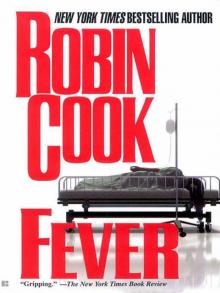 Fever
Fever Death Benefit
Death Benefit Contagion
Contagion Mindbend
Mindbend Coma
Coma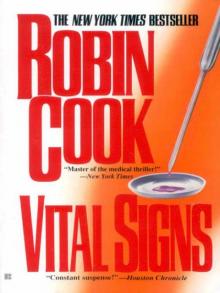 Vital Signs
Vital Signs Harmful Intent
Harmful Intent Critical
Critical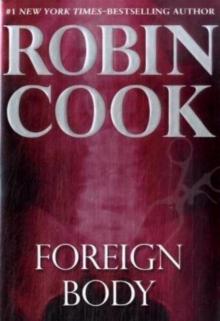 Foreign Body
Foreign Body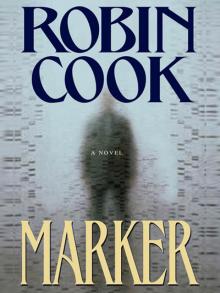 Marker
Marker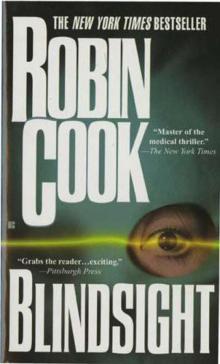 Blindsight
Blindsight Terminal
Terminal Sphinx
Sphinx Fatal Cure
Fatal Cure Host
Host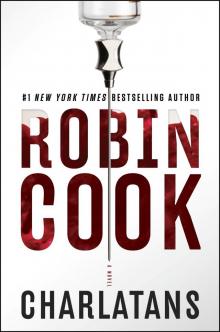 Charlatans
Charlatans Crisis
Crisis Vector
Vector Toxin
Toxin Abduction
Abduction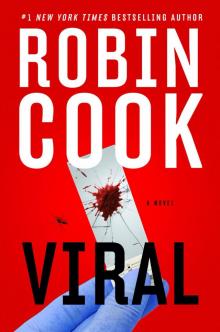 Viral
Viral Pandemic
Pandemic Outbreak
Outbreak Vector js&lm-4
Vector js&lm-4 Godplayer
Godplayer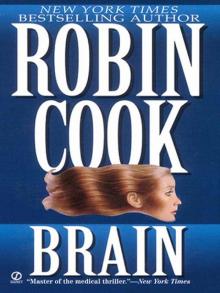 A Brain
A Brain Year of the Intern
Year of the Intern Outbreak dmb-1
Outbreak dmb-1 Cure
Cure Mortal Fear
Mortal Fear The Legend of Parzival
The Legend of Parzival Vital Signs dmb-2
Vital Signs dmb-2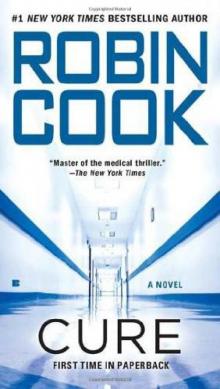 Cure (2010) sam-10
Cure (2010) sam-10 Blindsight sam-1
Blindsight sam-1 The Year of the Intern
The Year of the Intern Intervention sam-9
Intervention sam-9 Foreign Body sam-8
Foreign Body sam-8